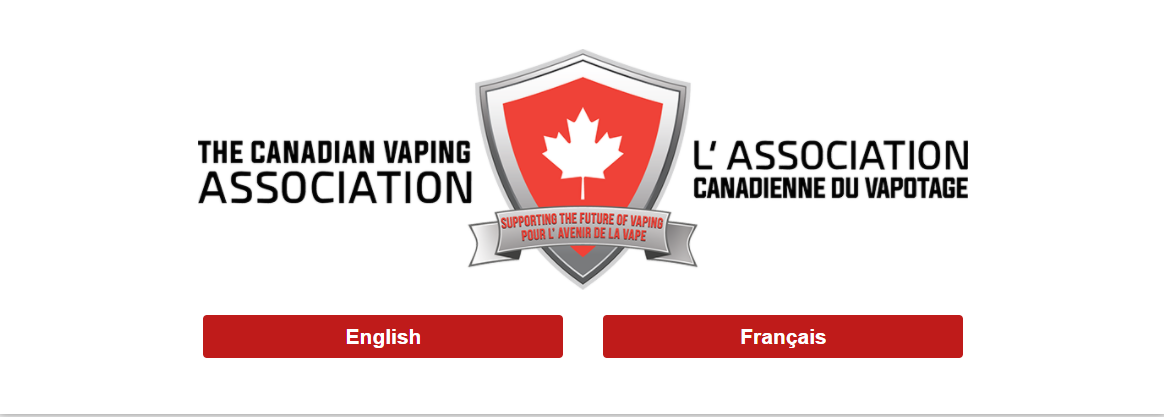Alarmist media reports, entities with political agendas, and sometimes sadly even well intentioned but misinformed health authorities, have been inaccurately linking the vaping industry with the tobacco industry. This has caused a lot of damage as the vaping industry, which was started by well intentioned smokers looking for a safer alternative to help them quit, is being viewed with suspicion and is being ironically affiliated with the same industry it was created to come up against.
A recent example is a University of Bath study, which explored the Twitter activity around the eighth meeting of the Conference of the Parties to the World Health Organisation (WHO) Framework Convention on Tobacco Control. The study titled, “Exploring the Twitter activity around the eighth meeting of the Conference of the Parties to the WHO Framework Convention on Tobacco Control,” inaccurately claimed that most arguments in favour of next-generation products (NGPs), were tweeted by entities affiliated with Big Tobacco.
A number of public health and tobacco harm reduction organizations and experts have since spoke up against these claims. “This UK study used highly inaccurate and unfair descriptions that undermined the quality of the research and the reputation of the University of Bath. From as far away as New Zealand, we’ve raised concerns over the speculative method it employed without using any scientific evidence in labelling tobacco harm reduction advocates,” said Nancy Loucas, Executive Director for CAPHRA (Coalition of Asia-Pacific Tobacco Harm Reduction Advocates).
The Association of Vapers India (AVI), which advocates for less harmful alternatives was one of the organizations attacked directly, and has written to the journal raising objections over being labelled as a tobacco industry front group, when infact their objective is being the opposite. “We have written to the journal raising objections over casting us as a tobacco industry front group without any evidence and by drawing unfair inferences from our membership of International Network of Nicotine Consumer Organisations (INNCO),” AVI director Jagannath Sarangapani said in response to the name-tagging by the University of Bath researchers.
CVA: “ We do not represent or accept support from tobacco companies”
In his letter to the public, the CVA executive director similarly emphasized and explained in depth the differences between the tobacco industry and independent vape businesses:
My name is Darryl Tempest and I am the Executive Director of the Canadian Vaping Association. Our organization represents independent vape retailers and manufacturers throughout our country. We do not represent or accept support from tobacco companies. From its inception our membership’s mission was to be a part of the solution to remove combustible tobacco from Canada forever. Our principles are simple, we support harm reduction for smokers through vaping, which studies have shown to be the single most effective method in history. We also advocate for regulations that balance adult harm reduction with youth protection.
As we predicted our fight against the tobacco companies has been a daunting task. Our mission to dismantle the tobacco industry has been met with highly paid lobbyists and predatory practices to protect their nicotine market share. It is important to understand that high nicotine products barely existed in Canada prior to 2018, when tobacco companies entered Canada with vape products. Tobacco companies primarily sell products with high nicotine ranging from 18-59mg/mL. Prior to Big Tobacco’s entry, specialty vape shops sold products ranging from 0-12mg/mL, while working with clients to gradually reduce their nicotine intake. As cigarette sales rapidly declined, tobacco companies responded by introducing extremely high nicotine products to ensure customers remain addicted.
We failed to anticipate that health advocacy groups would design polices to support big tobacco’s transition to dominate the vaping industry and destroy the independent vape industry dedicated to harm reduction. These policies put tobacco companies firmly in control to continue to drive high nicotine sales without any mention of harm reduction or relative risk. The support of Big Tobacco has recently been led by Dr. Andrew Pipe and Dr. Mohammed Al-Hamdani and their staff, creating their own research to counter the balanced and peer reviewed global research as it does not fit their narrative. In fact, Dr. Al-Hamdani has supported the legislation tobacco companies have lobbied hard for.
If Big Tobacco were to write legislation to advantage themselves, they could not have asked for better than the new regulation in Nova Scotia. Nova Scotia has taxed e-liquids 50 cents per millilitre sold and an additional 20% tax on the retail value of all vaping devices. This tax disproportionately tax’s adult ex-smokers who vape using refillable tank systems and barely taxes the highly addictive, high nicotine pod systems primarily sold in convenience stores, which the data shows are preferred by youth. For example, a typical 30mL bottle of e-liquid used by adult ex-smokers would be taxed an extra $15 (30mL x.50 cents/mL) effectively doubling its current retail price, while pod systems contain 1mL of liquid and would therefore be taxed 50 cents for each pod. Typically, these pods are sold in packs of 3, making the additional cost $1.50. If Dr. Pipe is so concerned with the affordability of vaping products for youth, where was his leadership in Nova Scotia?
Additionally, these organizations have positioned flavour bans as necessary for youth protection. The reality is the research demonstrates that flavour bans are completely ineffective in preventing youth vaping. While flavour bans don’t affect youth vaping rates, they do harm adult smokers by pushing them back to smoking. Yale researchers concluded that adults who quit smoking using a flavoured product were 2.3 times more likely to be successful, while the sales data from regions that have implemented flavours bans shows that in all cases smoking rates increased 3-9%. Tobacco companies benefit from flavour bans on both ends. As smoking rates increase, their tobacco sales do as well. Moreover, their vape products are not dependant on flavours but rather high nicotine concentrations, so flavour bans have no effect on their vape product sales.
The health organizations’ policy recommendation will lead to:
- The closure of specialty vape shops – the country’s only age-restricted retailers;
- Significant growth in foreign imports with no federal age verification regulations;
- A growing unregulated black-market selling unregulated and potentially dangerous products; and
- The loss of an unprecedented harm reduction opportunity for smokers.
How these recommendations play into Big Tobacco’s strategy:
- Replace cigarettes with high nicotine vaping products to ensure profits;
- Use per/mL taxation and flavour bans to eliminate the independent vape industry; and
- Once independent vape stores are wiped out due to taxation and flavour bans, use their already established distribution network to dominate the landscape.
How health organizations are helping them:
- Not engaging with stakeholders and ignoring the science behind vaping and its success;
- Failing to support vaping after science has proven significant harm reduction and effectiveness;
- Recommending ineffective policies such as flavour bans and taxation which have proven not to work and to harm smokers;
- Destroying the sole adult-only access retailers across this country, while fueling the illicit market for these products (criminals do not ID); and
- Ensuring that only high nicotine products are available legally
Tobacco companies have created the perfect storm, by irresponsibly marketing vape products prior to regulation preventing it, they’ve increased youth awareness and experimentation. They then supplied the market with high nicotine products with limited flavour profiles as they knew users would be addicted to nicotine as flavours are not addictive. Youth experimentation and high nicotine resulted in rightful concern by parents and regulators, causing sensationalist reporting by mass media that failed to convey the complexities and nuance of vaping. This in turn put pressure on regulators to act on misinformation which largely has been supplied by health organizations including Heart and Stroke. The entirety of the above, led us to where we are today with health advocates recommending policies to advantage tobacco companies exclusively.
We all must be on the right side of history with respect to vaping, without change, it is the 5 million Canadian smokers and 1 million vapers who lose. Ex-smokers will be forced back to smoking and current smokers will lose access to the specialty vape stores which unlike gas stations are equipped to aid in a smoker’s transition away from tobacco. Our youth also lose, as none of these health advocate’s proposals address the root of the problem. I ask that Canadians review the science and voice your support for harm reduction. Big tobacco created the problem, they are not the solution.














People seem to have a hard time understanding the concept of harm reduction. Something doesn’t need to be harmless to be a good alternative.